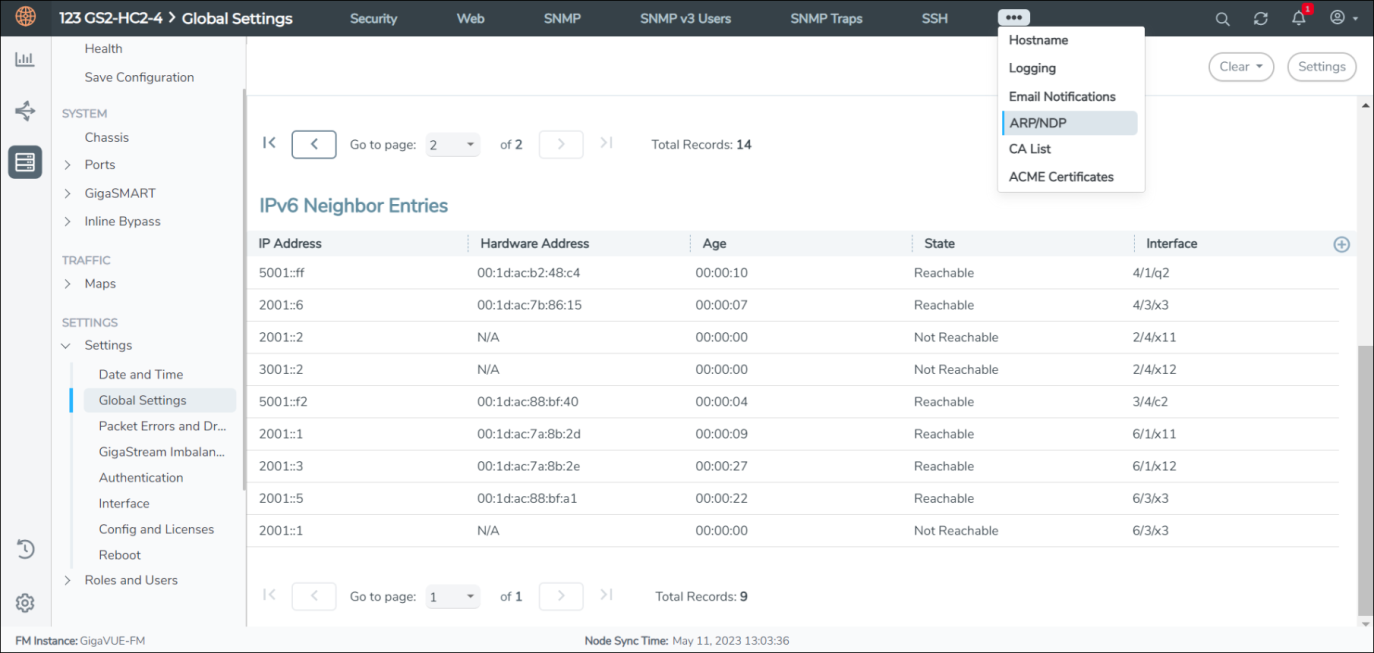GigaSMART VxLAN Tunnel Encapsulation
Required License for VxLAN Encapsulation: Base (GigaVUE‑HC1 Gen 3), Tunneling (GigaVUE‑HC3 Gen 3)
Supported Devices : GigaVUE- HC1 Gen 3,GigaVUE‑HC2,GigaVUE-HC3 Gen 3 ,GigaVUE-HC1 Plus.
Refer to Supported GigaSMART Operations for more details on the devices that support GigaSMART operations.
Starting in software version 5.11, support for VXLAN tunnel origination is added to GigaSMART. After receiving packets on the network ingress ports, they are sent to the GSOP chain. When a packet egresses out of the GS card, it is encapsulated with a VXLAN header, along with all outer headers (UDP, IP, and MAC), and then sent out to the appropriate multicast ID.
Use GigaSMART VxLAN tunnel encapsulation to send traffic from one GigaSMART node over the Internet to a second GigaSMART node using VxLAN encapsulation.
GigaSMART VxLAN tunnel encapsulation provides the VxLAN tunnel initiation and encapsulation on the tool port at the sending end of the tunnel (for example, at a remote site)
The GigaSMART at the remote site encapsulates the filtered packets, adds an encapsulation header, and routes it to the main office site. The encapsulation protocol is VxLAN and the delivery protocol is IP or IPv6, so the encapsulation header consists of Ethernet + IP + VxLAN or Ethernet + IPv6 + VxLAN headers.
The encapsulated packet is sent out of the tool port, which is connected to the public network (the Internet). This packet is routed in the public network to reach the main office site. It ingresses at the routed network port of the GigaVUE node at the main office.
For statistics for encapsulated packets, refer to Display VxLAN Tunnel Encapsulation Statistics.
The VxLAN header length is as follows:
|
Header |
Length in Bytes |
|
With Key |
50 bytes consisting of 14 Ethernet + 20 IP + 8 UDP + 8 VxLAN Key. |
Gigasmart VxLAN IPv4 lets you route filtered traffic to the remote
end using IPv4-based VxLAN tunneling. At the receiving end, filtered traffic is sent to GigaSMART, which adds an VxLAN header and a IPv4 header to make it routable.
The remote end decapsulates the packet and sends it to the tool port.
GigaVUE nodes act as VxLAN encapsulation and decapsulation devices.
The IPv4 protocol is used to deliver all packets received in the encap tunnel to the termination node using the configured source and destination IPv4 address. The tunnel termination (decap) node strips the IPv4 + VxLAN header and sends the payload to the tool port.
The arp protocol is used by the tool port on the encapsulation node for arp request and arp response messages to resolve the gateway MAC address as well as destination tool MAC address in local network and respond to arp request messages received from the gateway in the tunnel decapsulation/termination node. arp echo request/reply messages are also sent and received.


Gigasmart VxLAN IPv6 lets you route filtered traffic to the remote
end using IPv6-based VxLAN tunneling. At the receiving end, filtered traffic is sent to GigaSMART, which adds an VxLAN header and a IPv6 header to make it routable.
The remote end decapsulates the packet and sends it to the tool port.
GigaVUE nodes act as VxLAN encapsulation and decapsulation devices.
The IPv6 protocol is used to deliver all packets received in the encap tunnel to the termination node using the configured source and destination IPv6 address. The tunnel termination (decap) node strips the IPv6 + VxLAN header and sends the payload to the tool port.
The ICMPv6 protocol is used by the tool port on the encapsulation node for Neighbor Solicitation (NS) and Neighbor Advertisement (NA) messages to resolve the gateway MAC address as well as destination tool MAC address in local network and respond to NS messages received from the gateway in the tunnel decapsulation/termination node. ICMPv6 echo request/reply messages are also sent and received.
To view IP Interfaces statistics, select Ports > IP Interfaces > Statistics to open the IP Interfaces Statistics page.
The IP destinations pane displays the gateway or local tool status as UP if neighbor discovery is completed with gateway or local tool or down if neighbor discovery failed. Neighbor discovery is made only on the encapsulation node. On the decapsulation node, the gateway or local tool status will be Not Applicable.
To display Layer 2 VxLAN tunnel encapsulation statistics, select GigaSMART > GigaSMART Operations (GSOP) > Statistics. The statistics for tunnel encapsulation will be in the row labeled Tunnel Encap in the GS Operations column.
Refer to Tunnel Encapsulation Statistics Definitions for descriptions of these statistics as well as to GigaSMART Operations Statistics Definitions.



